The "every comic is someone's first" fallacy...
And the thrill of jumping into the deep end of serialized comics with no preconceptions + Anthony Award ballots and more details on THE FORGOTTEN FIVE
You hear it all the time, either as a reader or creator. “Every comic is someone’s first comic.” Or, “you need to write this as if it were someone’s first comic.”
For the latter, it’s often taken to mean “write the story simply” - i.e. introduce characters with an overabundance of clarity and emphasis, explain everything going on as it happens, and make sure nothing is left in question or doubt.
I think that’s wrong.
Now, hear me out. Of course, it’s our job as writers to give the reader enough to understand a story. But that can vary a great deal from the idea of “explain it all in 20+ pages” to “give them enough to enjoy the story and want more.”
**I should also note that, for the purposes of this post, I’m talking about monthly/serialized superhero comics - particularly the direct market kind. There are GREAT examples of all-ages comics that do keep things clear and focused, and this isn’t meant as a diss on any of that. Thanks to a friend for pointing this out!**
As a writer of novels and comics, one of my firmest beliefs is that the reader is smart. They’re readers! They understand plot threads and suspense and mystery and drama. They’re curious. They want to figure stuff out. They will dig deeper and be patient to see the full picture. It’s one of the tenets of my belief in the creative process. I see creating stories as a conversation with the reader - I, and my collaborators, give the reader just enough to create the story in their mind. It’s the magic of storytelling.
That’s really different from the common interpretation of the “every comic is someone’s first” idea, which I think has become overly-simplified and basic. Do I think it’s important to write clearly and understand the elements of a good story - like drama, suspense, conflict, resolution, and stakes? Of course! Do I think it’s important to let readers know who characters are and what they can do? Sure, it’s elemental. Should every comic have a beginning, middle, and end? Yes, yes, yes. You need that in every story, no matter how big your narrative is. That means your book chapters should be compelling and part 4 of 12 in your maxi-series needs to hook people in, too, as a standalone piece of narrative. But it doesn’t mean everything has to be spelled out for a mysterious “young/new reader” who has never seen or touched a comic book before. And it doesn’t mean the way the writer identifies and showcases characters has to read like a Who’s Who entry.
First of all, that “young reader” doesn’t really exist. Not in the sense that I think the maxim wants it to. There’s no such thing as a kid or new reader who has no concept of the pure basics of story, or lacks an understanding of what they’re engaging with - at least when it comes to comics. Again, readers are smart. Readers are curious. Especially young and new readers. And that “new” comics reader? They’ve read books. Or watched movies. Or TV shows. They know the basics of story, too.
So while, yes, as a writer it is on you to tell a CLEAR and EFFECTIVE story, there are lots of ways to do that - and some of them require a slow boil, or a fast-paced series of intercut scenes, or a seemingly winding narrative that takes a minute to pay off. Hell, some really benefit from that!
Case in point:
My first comic ever was an Archie digest (Betty & Veronica Double Digest #10, to be exact!), as I’ve shared here a number of times. It was a perfect introduction to the medium - clear art, characters promptly identified/named, humor, no expectation of continuity or history. Not to mention the fact the stories were funny, well-crafted, and delivered in short, 6-10 bursts of content. The perfect primer for a new reader. But to my earlier point - readers soon want more than that. This isn’t a diss on the Archie formula - it’s HARD to write humor, arguably harder than drama, and I’ve been reading classic Archie tales for over 40 years. But eventually, you want something a little more complicated and perhaps different. “Eventually” makes this sound like a long time - but for five or six-year-old me, “eventually” happened fast. And while I don’t think that’s universal, I do think it applies to a lot of “new” readers.
Which brings me to one of my first-ever superhero comics. Theoretically, this is the kind of comic that the “first comic” mandate would apply to. I think I was around eight when my dad brought this comic home - prime “new reader” time, right?
Uncanny X-Men #237 was written by Chris Claremont with art by Rick Leonardi and Terry Austin. It was the second part of Claremont’s first Genosha story, introducing readers to a South Africa-like apartheid state that enslaved mutants to benefit the non-mutant economy. This issue in particular focused on two members of the X-Men: Wolverine, who had been de-powered by the mutant baddie Wipeout, and Rogue, who was no longer in control of her mind, having ceded control to Carol Danvers, Ms. Marvel, who Rogue had inadvertently absorbed when she tried to drain her powers a while back. The titular X-Men do not show up in the issue until around the halfway point, if I’m remembering correctly (I talk about this issue on the X-Reads podcast!).
On paper, this is not what one would classify as “new-reader friendly.” The reader is dropped into a complicated story - closer to a chapter in a novel than a standalone issue. The characters are identified but not in their “peak” forms - Wolverine is dying from the lack of his healing factor, Rogue is literally not in her right mind, etc. And it’s not a typical issue in that the team isn’t a factor in the story until much later. Recipe for disaster, right?
Wrong.
I loved the issue. I was intrigued. I had been tossed into the deep end. I was enamored by Claremont’s purple prose (said with love!) and dialogue ticks, I was hypnotized by Leonardi’s crisp linework and knack for dynamic layouts. Did I know everything? Nope.
But I was curious as hell.
That’s the element that I think the “write every comic as if it was someone’s first comic” slogan tends to miss - or overlook. The intentions are good, but it’s not taking into account a key element of The Reader: curiosity. We want to figure stuff out for ourselves. In this era before Wikipedia of even Marvel trading cards, all I had was the comic in front of me, and I pored over it for weeks, reading and re-reading it to absorb every drop of information I could. Who were these mutants? What the hell was a Genegineer? Why did Wolverine and Rogue lose their powers? It would take a long time for me to find out, but because the story itself was so well-crafted, so masterfully executed, I didn’t care. I wanted more. The characters were cool. The world was fascinating - and the story had tapped into something primal. Needless to say, I’m still an X-Men reader.
So what’s the lesson here? Yes, you should make a comic aim to educate a new reader. But first and foremost, you should strive to make it good. And sometimes good - or the striving for greatness - means deviating a little bit from the established path.
Which brings me to the Legion of Super-Heroes.
Now, if you’re not familiar with the Legion, do yourself a favor and read this great, two-part essay by Margot Waldman at ComicsXF. It’s not a history, per se, but it’s a great vibe check on what makes the Legion special. I’ll wait here.
I should preface this Legion essay with a bit of context: I was never a Legion kid. The DC books I read as a child and teen were Batman (I was a completist, and started a few years before Knightfall - Denny O’Neil and Greg Rucka are on my Mount Rushmore of writers, period), Justice League International (I loved J.M. DeMatteis on Spider-Man, and though I didn’t know it at the time, appreciated Keith Giffen), Superman (post-John Byrne, heading into the Death of Superman), Marv Wolfman/George Perez New Teen Titans, and random stuff like the Heckler, Animal Man, the Question, or Green Arrow. My only exposure to the Legion as a kid were a few random issues of Legionnaires, which I loved because of the magnificent Chris Sprouse and Stuart Immonen art (with Karl Story inks!), but which didn’t speak to me story-wise, though I do recall Tom Bierbaum being really kind to me as a young fan on AOL. But I digress. Anyway, I didn’t get the Legion. I felt like there was a lot there (whoa was I right), but I didn’t understand how to get in, so it fell by the wayside. Even as an adult, starting my first stint at DC in the PR department, the Legion was a big, foggy area for me. Of course, by then I understood what the Legion was - a team of teen heroes inspired by Superboy to protect and defend the galaxy in the future - but I didn’t know what it stood for.
But I worked at DC and our President and Publisher was Paul Levitz, who’d had a few seminal runs on the title, including the story that everyone pointed to as not only the best Legion story, but one of the best comics ever: The Great Darkness Saga. A few months into the gig, on the way to Wizard World Chicago, I borrowed a trade paperback of the story and read it on the plane. I liked it, of course. It’s great comics - with powerful Giffen art. I could feel the passion in the work. It was clear the story mattered a lot to the storytellers, and I could tell it was important to the lore. But I wasn’t invested in the lore, beyond wanting to learn more. It was a cerebral curiosity, not a primal one.
I just figured the Legion, like many fandoms or universes I hadn’t experienced or tapped into at the right time, would just continue to exist and I’d maybe get another chance to tap in later. Or not. Them’s the breaks.
Time passed, I read our monthly Legion books for work - including the acclaimed Mark Waid/Barry Kitson reboot, the eventual Geoff Johns/Perez Legion of Three Worlds continuity puzzle, and Paul’s subsequent return to the ongoing Legion title. But, again, it was work - fun work, but work. I read the books because it was my job and I wanted to do it well. They were good, sharply-crafted, and very entertaining comics - but something was missing. Part of it was bigger than the Legion - once your hobbies become your job, it’s hard to find that magic again. And comics, this thing that I loved with every fiber of my being had become my job. I got a stack of every DC comic published, every week. It was great, but you get it. The dynamic changes.
In many ways, it was what led me to write novels - I’d started really getting into mystery novels (moreso) during this period, and reading and (trying to) write my own became my creative outlet. The Legion, as great as I was sure it was, felt too complicated - like a language I didn’t have enough time to learn. It happens.
But that all changed about a year ago, when I was trying to figure out what to read with my kids one evening. We’d just finished up a long run on some classic Archie and I could tell both of them wanted something more complex (sound familiar?). My son just turned nine and my daughter is five - so threading that needle, finding something that entertains his older, action-oriented brain and taps into her wide-eyed wonder, is tough. I’ve found that Silver Age comics work best - early Marvel stories, like Spider-Man, X-Men, the Avengers all landed well, but in particular, it was Silver Age DC - the “checkerboard” era books - that work best. Especially those that have a healthy dose of weird - like Doom Patrol and, you guessed it, Legion of Super-Heroes.
We got through the above Silver Age collection quickly - and the kids loved the colorful characters, funny names, and bonkers villains. I was a little surprised by the pulpy, often morbid stories. We all had a blast. And I started to gain a greater appreciation for this group of heroes I’d so often ignored or just assumed I’d missed my chance with. But while the original material was fun to read as a group, I hungered for something a little edgier and complicated for myself. I cared about the characters now. So, like any writer, I wanted to see them suffer.
I had spoken to a few friends online about Keith Giffen, Tom & Mary Bierbaum, and Al Gordon’s “5 Year Later” Legion run and it felt like a great thing to read - so many creators I admired also sang its praises. But I also felt this compulsive need to read everything that came before to fully appreciate what 5YL was. Until I didn’t.
I can’t say that X-Men story from earlier didn’t cross my mind - I was chasing that feeling of complete ignorance and wonder. I wanted to be that “new reader.” I didn’t want to know everything before I started - I wanted to be that kid that yanked a cool-looking comic cover off the spinner rack at Eckerd Drugs. But I was also an adult, and I wanted to be challenged. Giffen’s Legion did not disappoint.
As the title suggests, Giffen’s run picks up five years after the conclusion of writer Paul Levitz’s legendary work, in the wake of the continuity clean-up that was Crisis on Infinite Earths (which included the elimination of Superboy from canon, which certainly created problems for Giffen and co. later on). But, here’s the thing: 5YL Legion is not a superhero book. It’s more a dystopian sci-fi novel that is superhero-adjacent. Hell, it’s not a Legion book until at least a dozen issues into the run. Why? Because it’s a story about the Legion - in the wake of the team’s destruction. It’s a dark, dystopian saga, with a tiny flicker of hope in the shape of some guy in a trenchoat named Rokk Krinn. Who was Rokk? I had no idea. He kind of looked like Cosmic Boy, though…
The first issue immediately braced me. it felt like a novel in comic book form, evocative of the best of Claremont but in a sci-fi setting featuring characters I didn’t know or understand. I felt that familiar rush again - I’d been tossed into the deep end of the pool, and I had to scrape for information to try and understand what was happening. And it was a blast.
On top of that, Giffen pretty strenuously adhered to a Watchmen-esque nine-panel grid, packing so much story and visuals into each issue that you felt you were actually exploring the 30th century in realtime.
There were no code-names. No superhero uniforms. No team rallying cries. And the characters made references to things that happened during the five-year gap, dropping tantalizing clues like “Venado Bay” that you hoped would be paid off (and usually were, though not always as expected). But 5YL was something else:
It was a book about failure. About getting older. About moving past the bright colors and wonder of your youth and coming face to face with a dustier, harsher reality. Like the old adage, it was about not being able to go home again - and coming to terms with that. So, it was unlike any superhero story I’d ever read - especially anything that was supposed to be canonical (more on that in a bit). The powerful mix of Giffen’s manic ideas, evocative layouts, and noir-tinged pencils with the smooth sheen of Tom and Mary Bierbaum’s script, with credit to Al Gordon’s polished inks…it all added up to a comic unlike any I’ve read, and a clear inspiration to many other series I have enjoyed, like Jonathan Hickman and co.’s recent Krakoa era on the X-titles.
Also important: Giffen’s 5YL forces you to work. He doesn’t make anything simple. The characters refer to each other by their real names. They reference planets and battles offhand, conversationally. Past issues are talked about fleetingly, with no editorial notes. I admit, I had about a dozen browser tabs open at a given time, just trying to figure out who these characters were and how they all fit in together. Seem like a lot of work? Not at all. It was part of the fun - the discovery.
Another element of the series that I found jaw-dropping and inspirational? The fluidity of the narrative. It reads like a great jazz record - all the musicians know the chords and they’re looking at the same cheat book, but they’re not sure how the song’s going to go exactly, and they’re willing to improvise, taking turns at lead. Giffen was the captain, sure, but the Bierbaums had their share of moments in the spotlight, and Gordon was a versatile utility infielder - inking, story assists, and writing in almost equal measure. But back to the jazz comparison - it was clear to me that the run, as a whole, was not preordained. Sure, Giffen probably knew the broad strokes - but, from my read, he left the details to the doing.
There’s no better example of this than the fourth issue of the series, which I won’t spoil, but has a major monkey wrench thrown into the book’s overall narrative that maybe, to a lesser creative than Giffen, would’ve destroyed the entire run. In Giffen and co.’s hands, though, it becomes an opportunity. in the wake of characters being taken off the board, new pieces are put in play - and new, vibrant characters, like the wonderful Laurel Gand, are created.
Laurel, a character created to fill a space once taken up by Supergirl in Legion lore, could very easily have been a footnote - but instead Giffen and the Bierbaums infuse her with a verve and energy that the original character often lacked. Laurel Gand was spunky, powerful, cool, and intriguing. Every time she was on the page,she was the star. And that’s just one example off the top of my head.
The 5YL Legion is also the kind of comic book run that doesn’t happen anymore, at least not in work-for-hire superhero comics. Giffen had runway. Even with the challenging launch, editorial interference, and myriad obstacles, Giffen and friends worked on the book for almost 40 issues, which is seemingly unheard of now. Plots were left dangling for six months. Characters disappeared and reappeared. Stories would take time to be resolved. It was downright Claremontian in its novelistic pacing. Experiencing it now, like binging seasons of a classic network drama - think Homicide or Twin Peaks - feels like I’ve been handed a cheat code, to be able to see the various plot threads drape across a table - watch them wind and tangle only to straighten out by the end. In particular, Giffen’s unfurling of the ‘Batch SW6’ Legion is perfect. I admit, I was dreading the reveal. I’d been burned by “clones” before - and it felt like an impossible task. But the creative team teases and pokes at the idea so well that by the time this new, younger group of duplicates appears, they stand in stark contrast to the grim and despair-filled world our older, more familiar heroes live in. It was the jarring difference Giffen wanted - to show readers how that Legion didn’t fit anymore, and how you can never really go home again. And it works.
5YL Legion is a body of work that is impressive not only in its execution but in its ambition - a story that upends a classic superhero franchise and succeeds in spite of itself and in spite of what the company might have wanted.
While I’m not at the end of the series yet, or, I should say, the end of Giffen’s part in it - I can feel things coming apart. I have an idea how things will close up - and I’m dreading it, which is always a sign of good art, the fear of finality. But as a creator, I also know endings are good - and truly rare in serialized work-for-hire comics.
But all things end, right? And what a run. A lot has been written about what happened after, and I’m sure you can find those think-pieces (I link to some above) if you really want to - but for me, I wanted to come into this experience and just enjoy the ride. Experience the run and then, once finished, consider what it all meant for the characters. And what to read next. I wanted to enjoy the 5YL run as its own, standalone thing.
And this was a run, mind you, that I entered without a doctorate in Legion history. A run that just seemed cool to me - that beckoned to me from the virtual rack. I wasn’t a new comics reader, no, but I also wasn’t the target audience. Still, I found my way in and enjoyed the ride.
As a creator, reading runs like these - years-long, focused and visionary, twisty and winding sequential art novels that consistently keep readers on their toes, that challenge and push them to think, that traffic in real stakes and genuinely surprise…those are the books that inspire me to create my own work. Like Claremont’s original run with Cockrum, Byrne, Smith, JRJR, Silvestri, Lee, and more, or Jaime Hernandez’s Locas…Giffen’s 5YL era, though flawed and far from perfect, showcases what you can do in comics with some road ahead of you, talent, a command of the craft, and a desire to shoot your shot. It’s pretty breathtaking.
And you don’t need to do your homework before diving in, either. In fact, it’s even better if you jump out of the plane with your eyes closed - and your flight ring on.
***
A BIT OF SELF-PROMO
Are you going to Bouchercon this year in New Orleans? I’ll be there! I’ll even be one of the Guests of Honor!
If you’ve registered for this year’s event, or if you attended last year, you probably got an Anthony Awards ballot. May I humbly ask that you consider my latest crime novel, Alter Ego, in the Best Hardcover Novel category? 2024 was a great year for crime fiction, and Alter Ego snuck into the end of the year by landing in early December. It was an instant national/USA TODAY bestseller and was called “thrilling” by The Wall Street Journal, getting love from The Hollywood Reporter, Parade, Cosmopolitan, Publishers Weekly, and more. Plus, these nice folks seemed to like it:



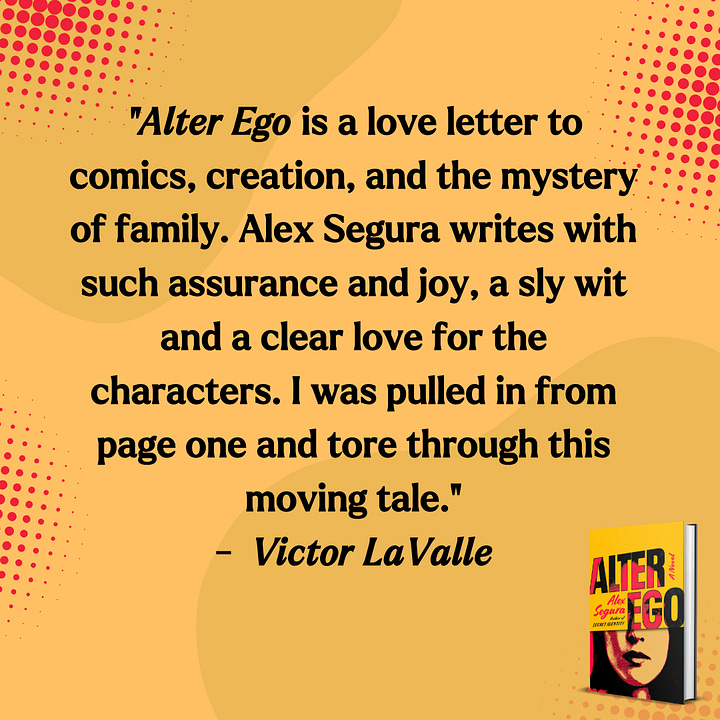



Thanks in advance!
***
WHAT THE HECK IS THE FORGOTTEN FIVE?
And speaking of comic book series that we hope to run for a long time: remember this promo image for The Forgotten Five, by me, Sara Century, and Pat Kennedy? Well, if you wanna know more…
I’ll be sharing more details about the project here, but for now, feel free to join as a free member (I’m a great businessman). We’ll have some actual comic book pages to share very soon.
That’s all for now!
Alex
***
UPCOMING RELEASES
DICK TRACY #8 - March 19 [Mad Cave]
GREEN HORNET/MISS FURY #3 - March 19 [Dynamite]
THE QUESTION: ALL ALONG THE WATCHTOWER #5 - March 19 [DC]
GREEN HORNET/MISS FURY #4 - April 9 [Dynamite]
DICK TRACY #9 - April 16 [Mad Cave]
THE QUESTION: ALL ALONG THE WATCHTOWER #6 - April 30 [DC]
FREE COMIC BOOK DAY 2025: STAR WARS - May 3 [Marvel]
STAR WARS #1 - May 7 [Marvel]
DICK TRACY #10 - May 14 [Mad Cave]
GREEN HORNET/MISS FURY #5 - May 14 [Dynamite]
STAR WARS: THE BATTLE OF JAKKU TPB - June 3 [Marvel]
WHAT IF…? GALACTUS TPB - July 1 [Marvel]
GREEN HORNET/MISS FURY TPB - July 29 [Dynamite]
SPIDER-SOCIETY: ENTER THE SPIDER-VERSERS TPB - July 29 [Marvel]
UPCOMING EVENTS
A NIGHT OF LITERARY FEASTS (Fort Lauderdale, FL) - March 29, 5:30-7:30pm EST
LA TIMES FESTIVAL OF BOOKS (Los Angeles, CA) - April 26-27
BOUCHERCON (New Orleans, LA) - Sept. 3-7


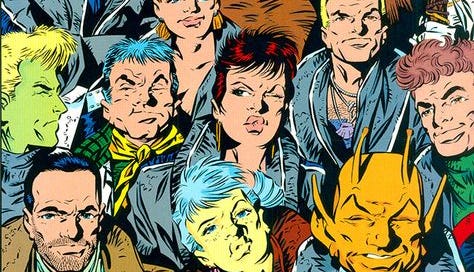

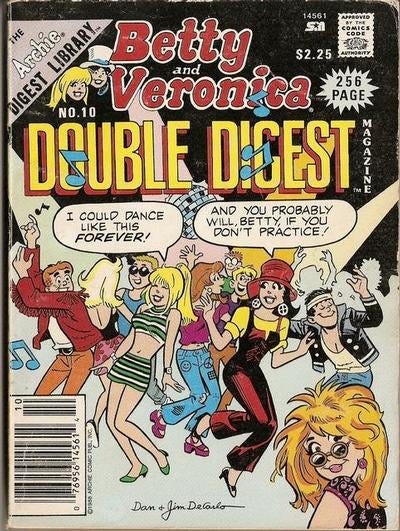
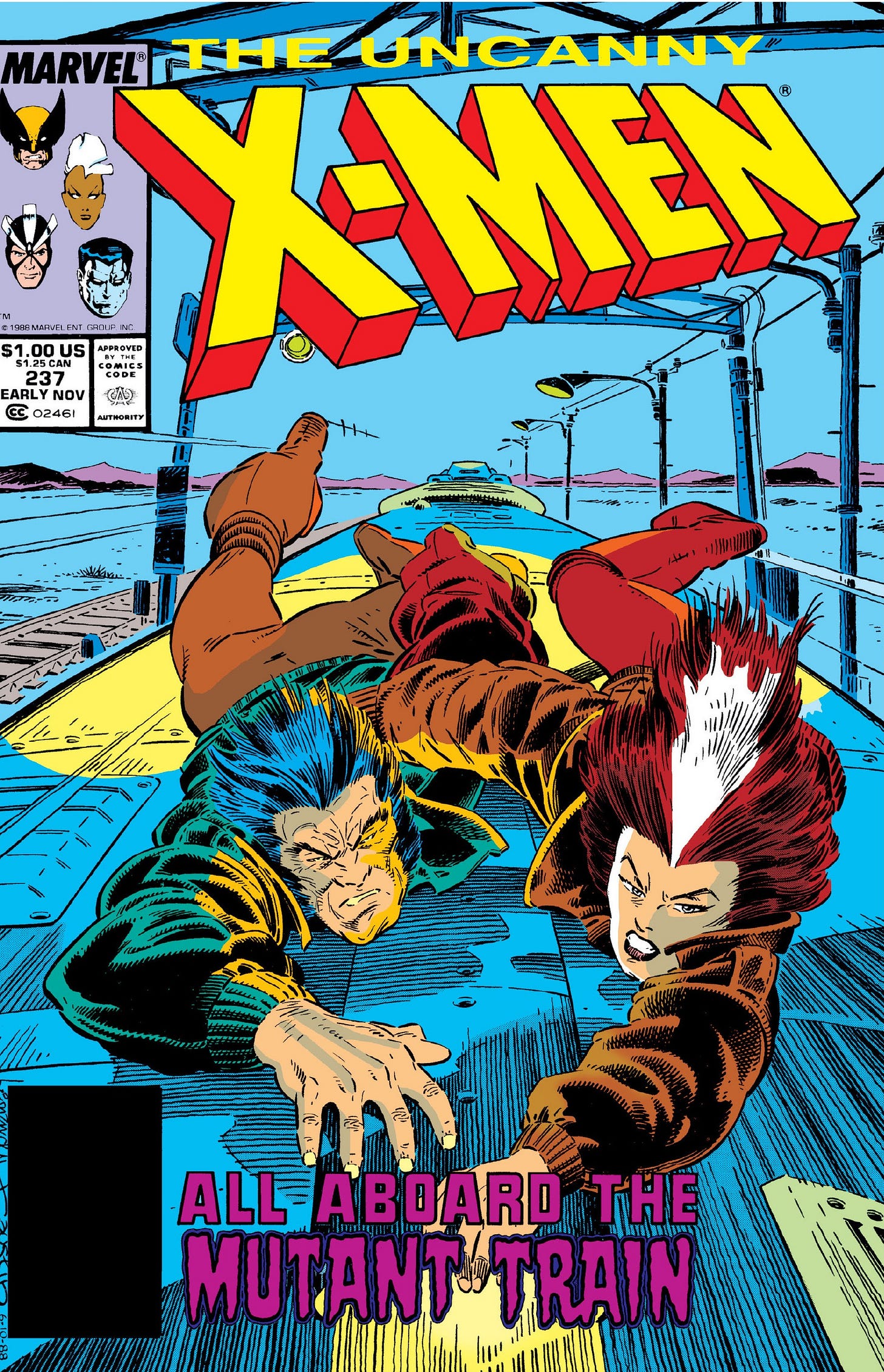
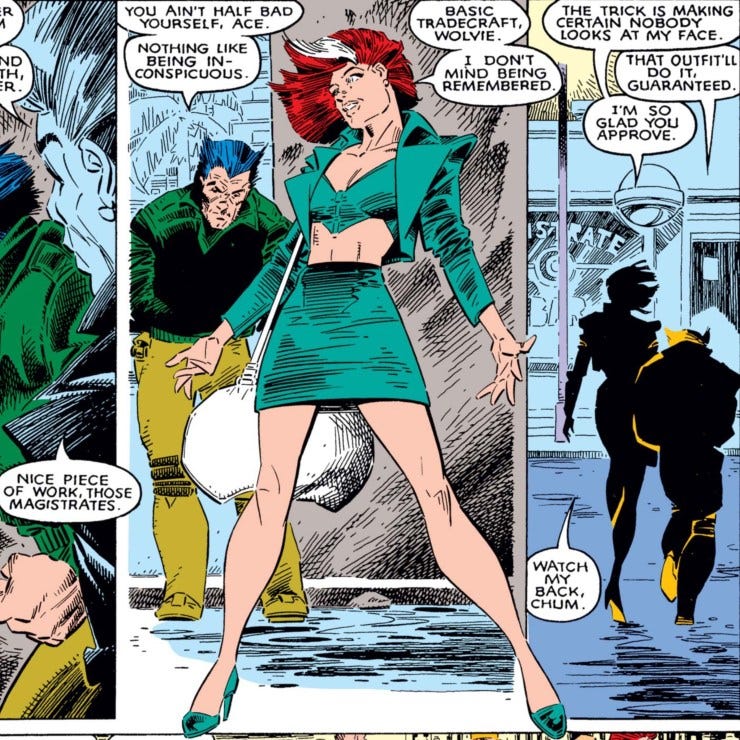


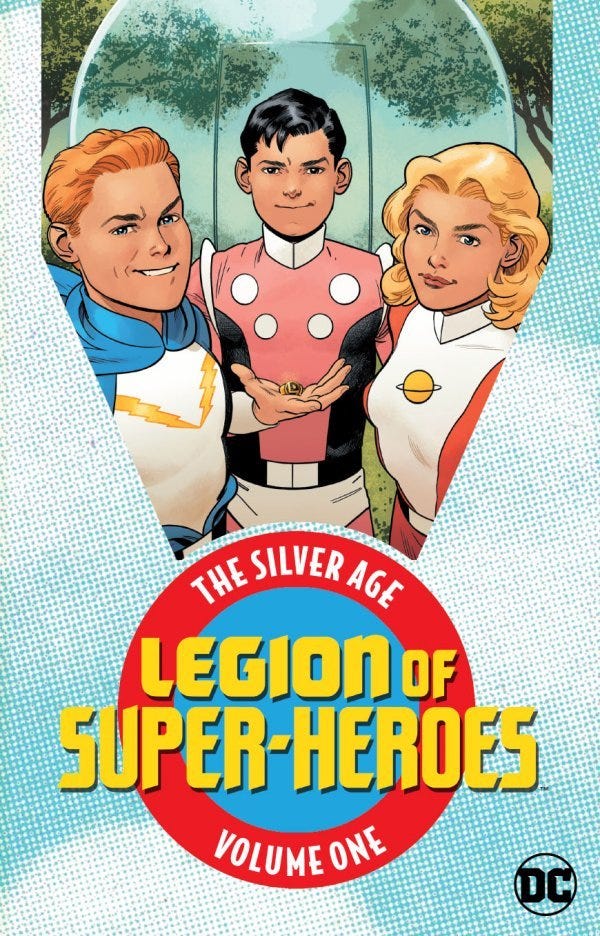

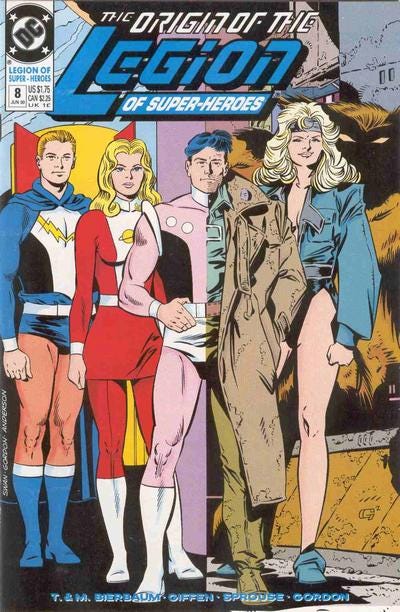
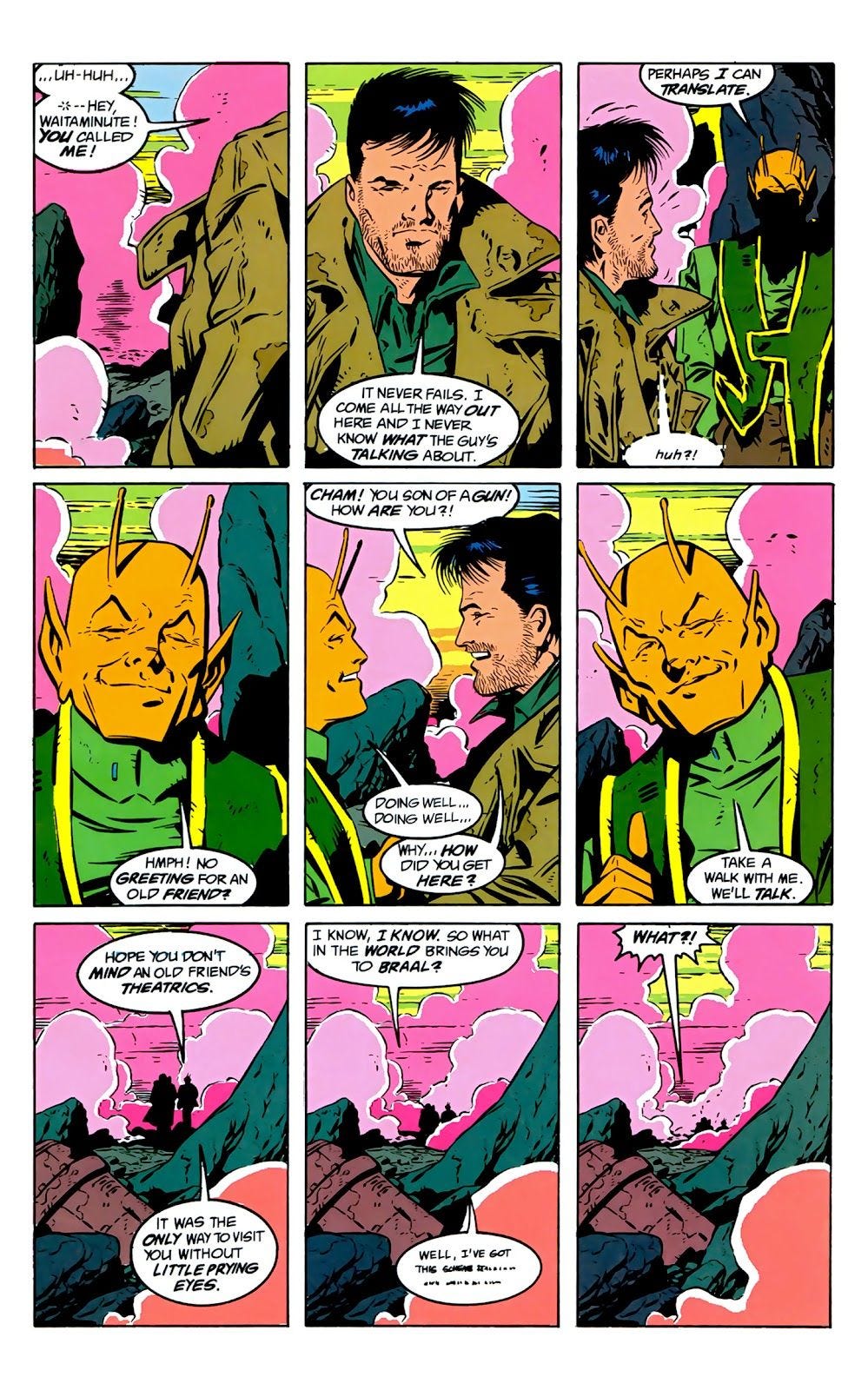
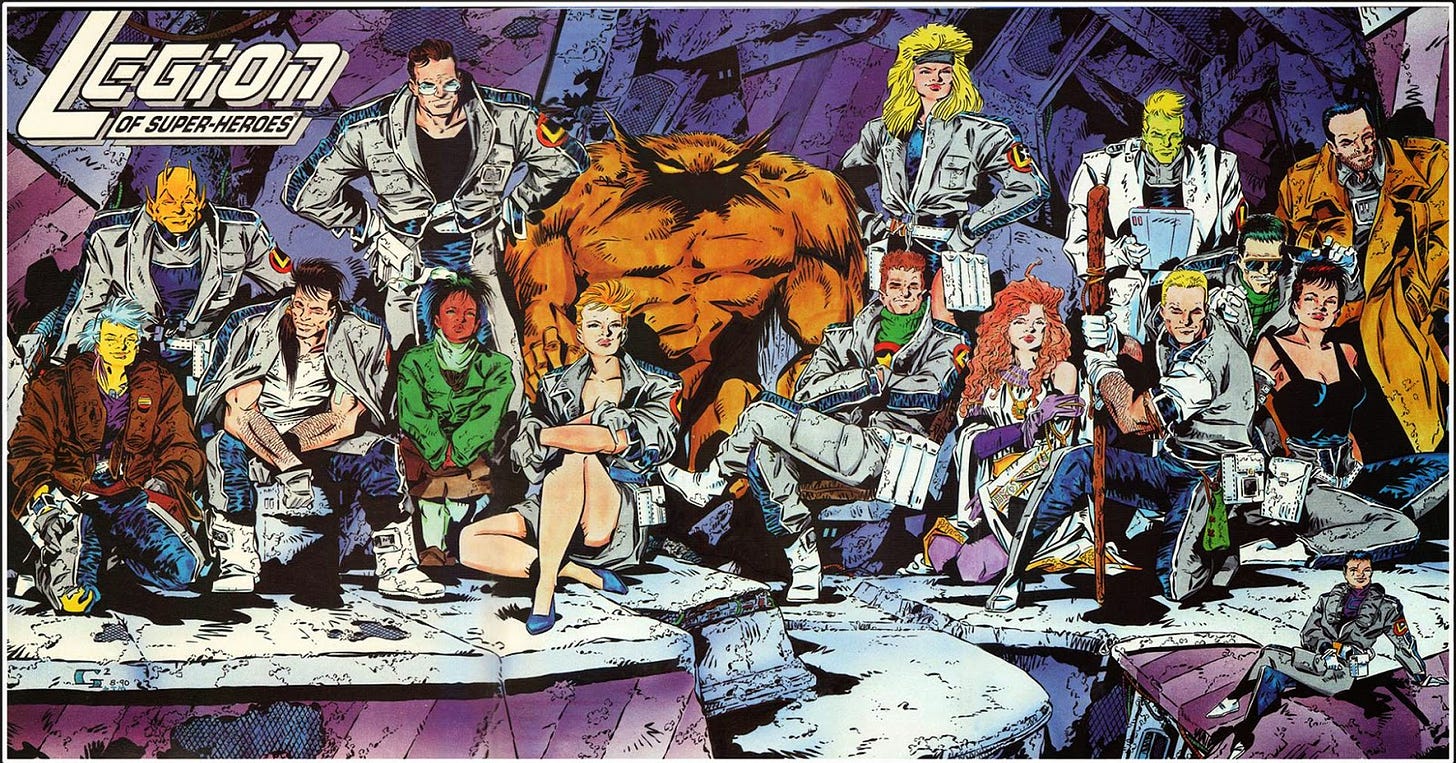
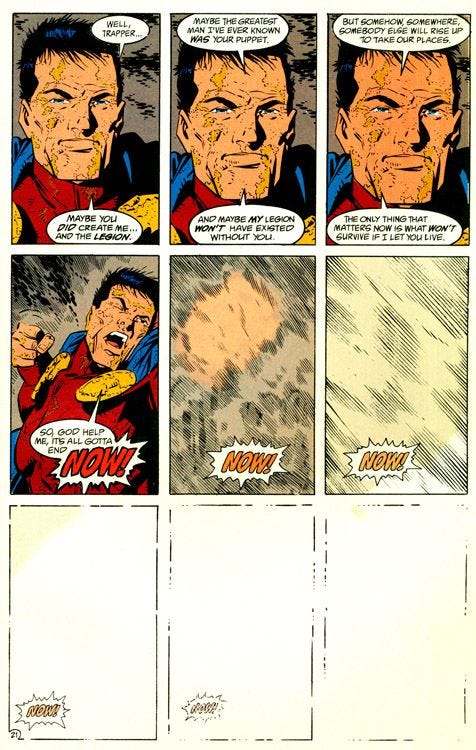

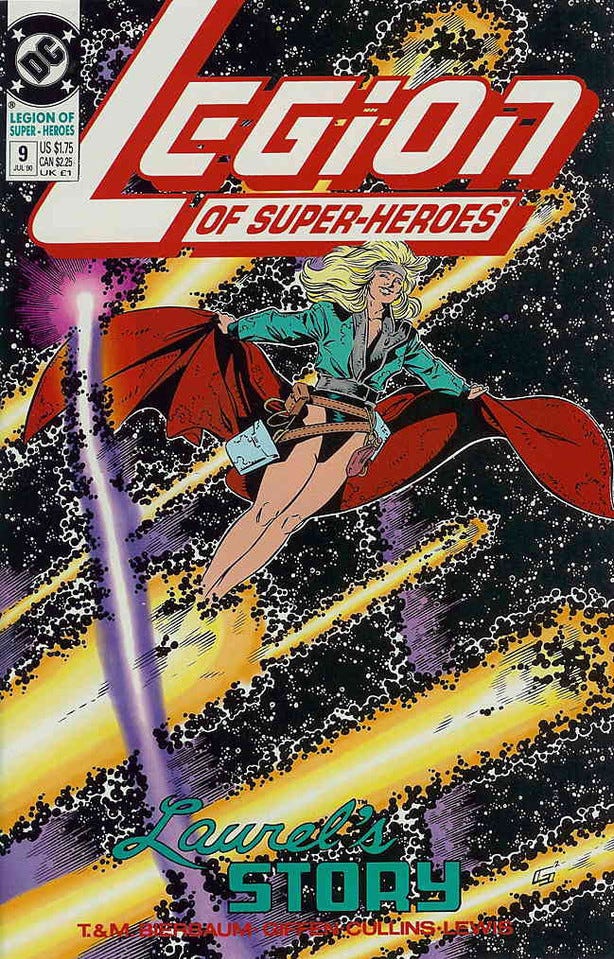
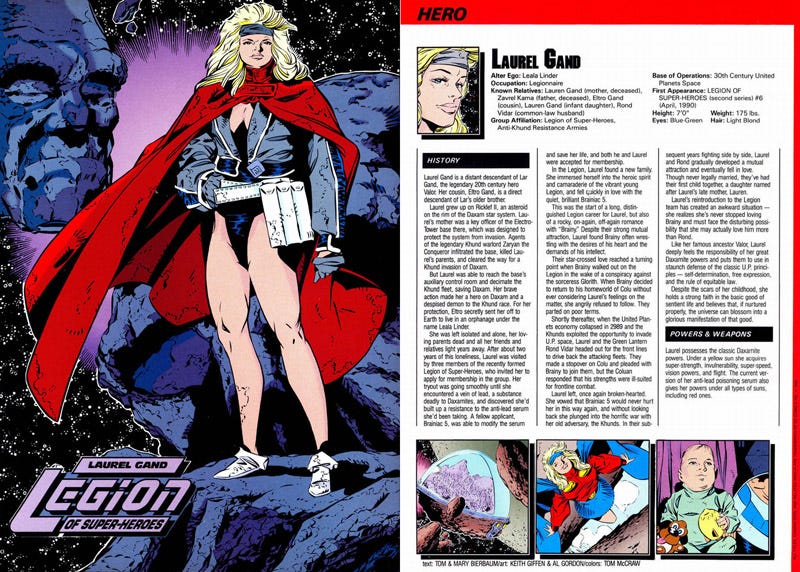

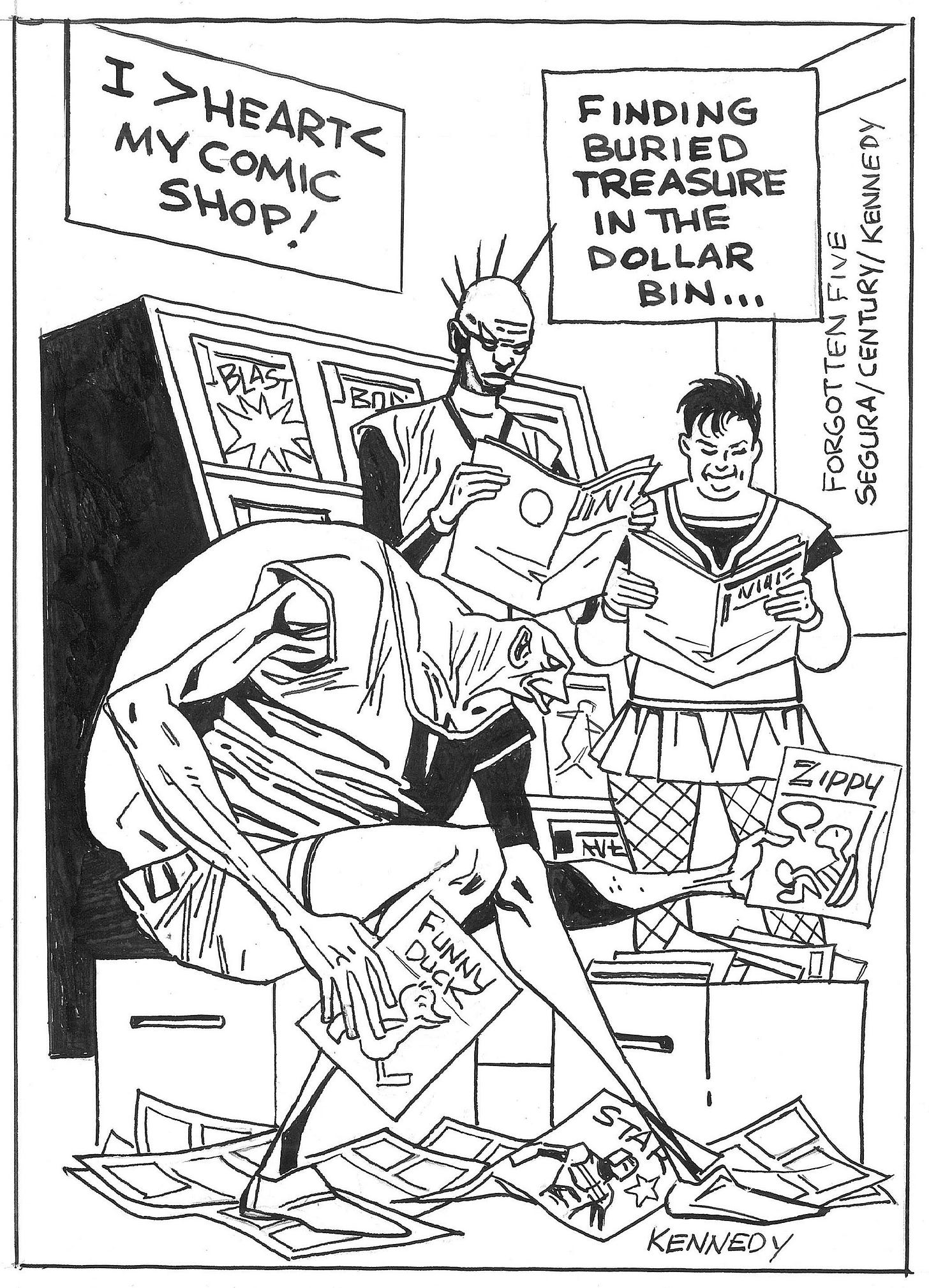
My first comic when I was eight years old was part 12 of “Maximum Carnage.” Been reading comics ever since.
First: You've REALLY made me want to read the LEGION: 5 YEARS LATER run. At the time it was coming out, it was just TOO grim for me, too much taking characters that were all about hope and putting them through the Frank Miller grinder. But, given that time has passed, I can see that maybe that's EXACTLY why the LEGION were the best characters to do that with. And Keith's work is always worth looking at. Any chance there's a collection… ?
Second: I have a few rules about writing, and one is READERS LIKE TO FIGURE THINGS OUT. Readers like to be smart. Give them the right clues, they can connect the dots. It doesn't need to be spelled out every time. The most obvious example I can give of this is in my IMPOSSIBLE JONES series. I knew the character would swear, yet I didn't want to write her swearing. And I have a knee-jerk reaction to using $#!@@ in place of swearing. Hate it. So I decided to REDACT the swear-words— cover them with a black box, but with a little bit of the word showing. IMP has a sort of tongue-in-cheek meta side to it, so this approach fit. PLUS my 10-year-old son was SO PROUD when he figured out what the swear word was. And I say: good for him!
Another Rule: ASK YOURSELF "WHAT DOES THE READER NEED TO KNOW TO UNDERSTAND WHAT IS GOING ON RIGHT NOW?" Because that's all you have to share. Do we really need to know Captain Atomic once had an affair with Wild Woman and even he doesn't know the Terror Twins are his illegitimate children… WHEN HE'S ORDERING COFFEE? Chances are we do NOT. Now, maybe the Terror Twins order the exact same kind of specialized coffee Captain Atomic does— that's a nice clue there's a connection there, even if everyone laughs it off as a weird coincidence. But really, that's all you need to do right there, at that point. There is no need to explain— even to the readers in captions or flashbacks— the whole sordid story. I do this constantly when I write. "OK— *I* know this background detail, but is THIS the right place to bring it up? Is it in character for this person to bring it up? Does it help the story to bring it up?"
I think if you make sure readers have enough info to understand what is happening, that will solve all your problems— whether it's a person's first comic, of their hundred and first.